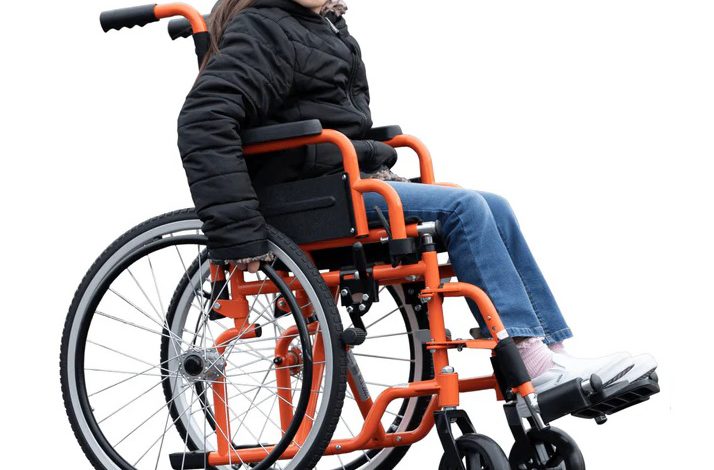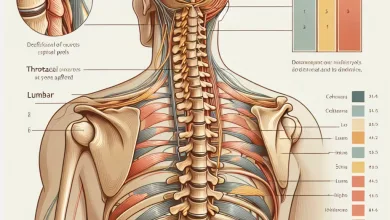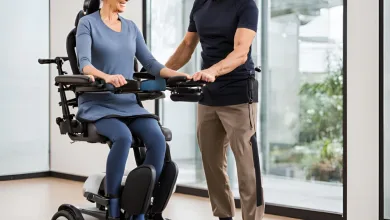Empowering Kids: The Guide to Pediatric Wheelchairs

Table of Contents
Empowering Kids: The Guide to Pediatric Wheelchairs
Wheeling Towards Independence with Pediatric Wheelchairs
Imagine a world where your child can explore their surroundings with confidence and ease. Pediatric wheelchairs open doors to a world of possibilities for children with mobility limitations. These specialized chairs are designed to provide comfort, support, and independence for young users, allowing them to participate fully in everyday activities.
This guide delves into the wonderful world of pediatric wheelchairs, exploring different types, essential features, and helpful tips to ensure you find the perfect fit for your child.
Types of Pediatric Wheelchairs
Pediatric wheelchairs come in various configurations to suit your child’s individual needs and preferences. Here’s a breakdown of some popular options:
- Standard Manual Wheelchairs for Kids: These wheelchairs are propelled by the user’s arms and are an excellent option for children with upper body strength. They are often lightweight and maneuverable, making them ideal for navigating tight spaces.
- Kids Manual Wheelchairs: Similar to standard manual wheelchairs, Kids Manual Wheelchairs prioritize comfort and maneuverability for smaller users.
- Pediatric Power Wheelchairs: For children who require extra assistance with mobility, pediatric power wheelchairs offer a motorized option. These chairs are controlled by a joystick or other controls, allowing for greater independence.
- Lightweight Pediatric Wheelchairs: When portability is a concern, lightweight pediatric wheelchairs are a great choice. These chairs are constructed from lightweight materials, making them easier to transport and handle.
- Lightweight Folding Child’s Wheelchair: These combine the benefits of a lightweight pediatric wheelchair with the convenience of a folding frame, perfect for travel and storage.
- Medical Pediatric Wheelchairs: These wheelchairs prioritize medical needs and may offer additional support features like headrests, positioning straps, and specialized seating.
- Pediatric Tilt Wheelchairs: For children with specific postural needs, pediatric tilt wheelchairs offer the ability to tilt the seat at an angle, improving comfort and preventing pressure sores.
Transition: With so many choices, it’s essential to consider your child’s specific needs and preferences to find the perfect fit.
Manual Wheelchairs vs. Power Wheelchairs vs. Special Needs Wheelchairs: A Comparison Chart
Choosing a suitable wheelchair depends on individual needs and preferences. This chart compares three main wheelchair categories: Manual, Power, and Special Needs Wheelchairs.
| Feature | Manual Wheelchairs | Power Wheelchairs | Special Needs Wheelchairs |
| Propulsion | User-powered (handrims) | Electric motor | Varies (manual or electric) |
| Ideal User | Individuals with upper body strength and good balance | Individuals with limited upper body strength or endurance | Individuals with specific postural needs or limitations |
| Frame Type | Rigid (lightweight, stable) or Folding (portable) | Rigid or Folding | Rigid or Folding |
| Maneuverability | Excellent in tight spaces | More challenging in tight spaces | Varies depending on features |
| Weight | Lighter weight | Heavier weight | Varies depending on features |
| Cost | Generally lower cost | Higher cost | Varies depending on features |
| Physical Demands | Requires upper body strength | Minimal physical exertion | Varies depending on features |
| Independence | Promotes independence and exercise | Offers greater independence | May or may not promote independence |
| Examples | Rigid frame wheelchair, Folding frame wheelchair, Ultralight wheelchair | Front-wheel drive power wheelchair, Rear-wheel drive power wheelchair, Stand-up wheelchair | Tilt-in-space wheelchair, Reclining wheelchair, Growth wheelchair |
Manual Pediatric Wheelchairs:
- Pros: Affordable, lightweight, maneuverable, promotes exercise and independence.
- Cons: Requires upper body strength and good balance.
Power Pediatric Wheelchairs:
- Pros: Offers greater independence for those with limited mobility reduces fatigue.
- Cons: Heavier weight, less maneuverable in tight spaces, higher cost.
Special Needs Pediatric Wheelchairs:
- Pros: Provides specific support and positioning for individuals with unique needs.
- Cons: It may limit the user’s ability to self-propel and can be heavier or bulkier.
Additional Considerations:
- Rigid vs. Folding Frame: Rigid frames offer more stability while folding frames are more portable.
- Front-wheel vs. Rear-wheel Drive Power Chairs: Front-wheel drive offers indoor maneuverability, while rear-wheel drive provides better outdoor performance.
- Tilt-in-Space vs. Reclining Wheelchairs: Tilt-in-space wheelchairs allow for tilting the seat for pressure relief while reclining wheelchairs fully recline the chair.
- Growth Chairs: Designed to accommodate growing children.
Remember: This is a general comparison. Always consult with a healthcare professional to determine the best wheelchair type for your specific needs.
Finding the Right Size
Finding the right size for a pediatric wheelchair is crucial for your child’s comfort, safety, and overall well-being. A well-fitting chair allows for proper posture, prevents pressure sores, and ensures efficient movement.
While pediatric wheelchair size charts can be a helpful starting point, it’s important to remember that every child is unique. These charts provide general size ranges, but a pediatric wheelchair should always be measured and fitted by a qualified professional.
Here’s a pediatric wheelchair size chart to give you a general idea of the different sizes available:
| Measurement | Size Range (inches) |
| Seat Width | 10″ – 19″ |
| Seat Depth | 9″ – 16″ |
| Back Height | 8″ – 20″ |
| Footrest Length | Varies |
| Armrest Height | Varies |
Transition: Remember, this chart is for informational purposes only. It’s vital to get a proper pediatric wheelchair fitting from a healthcare professional to ensure the perfect fit for your child.
Here are some key things to consider when getting a pediatric wheelchair fitting:
- Seat Width: The seat should be wide enough for your child to sit comfortably without feeling cramped. There should be 1-2 inches of space on either side of your child’s hips.
- Seat Depth: The seat depth should allow for proper leg positioning with a slight knee bend. Your child’s feet should rest comfortably on the footrests with their heels flat on the surface.
- Back Height: The back height should provide adequate support for your child’s back and shoulders. It should reach between their shoulder blades and the base of their head.
- Footrests: Footrests should be adjustable to ensure proper leg extension and positioning. They should also provide adequate support for your child’s feet and ankles.
- Armrests: Armrests should be positioned at a comfortable height for your child to push themselves or rest their arms. Detachable or adjustable armrests may be beneficial depending on your child’s needs.
By getting a proper fitting, you can ensure your child’s pediatric wheelchair provides the perfect balance of comfort, support, and functionality.
Additional Considerations
Beyond size, there are other features to explore when choosing a pediatric wheelchair:
- Material: Consider the weight and durability of the wheelchair frame. Lightweight materials are more accessible to maneuver, while sturdier frames can offer additional support.
- Adjustability: Look for wheelchairs with adjustable features like armrests, legrests, and seat backs to accommodate growth and changing needs.
- Comfort: Cushioning and seat material are essential factors for long-term comfort. Breathable materials and pressure-relieving cushions can help prevent discomfort.
- Safety: Look for features like lap belts, anti-tippers, and wheel locks to ensure your child’s safety.
- Style: Some wheelchairs offer a variety of colors and frame designs to suit your child’s personality. Involving your child in the selection process can boost their confidence and acceptance of the wheelchair.
Finding the Best Pediatric Wheelchair
With all this information at hand, you’re ready to find the best pediatric wheelchair for your child! Here are some helpful tips:
- Consult with a healthcare professional: A doctor, therapist, or other healthcare professional can assess your child’s needs and recommend suitable wheelchairs. They can also help you measure your child for proper sizing and guide you on features that might be beneficial.
- Get fitted by a qualified provider: A qualified provider can ensure the wheelchair is adjusted correctly to your child’s body and provide training on safe and efficient use.
- Consider your child’s lifestyle: Think about where your child will be using the wheelchair most often. This will help you determine features like portability, maneuverability, and durability.
- Involve your child in the process: When possible, involve your child in choosing their wheelchair. Let them try out different models and see which one feels most comfortable and suits their preferences.
- Think about insurance coverage: Many insurance plans may cover the cost of a pediatric wheelchair. Check with your insurance provider to see what coverage is available.
Transition: By following these tips, you can ensure you find a pediatric wheelchair that empowers your child and fosters their independence.
FAQs: Frequently Asked Questions About Pediatric Wheelchairs
Q: What is the best pediatric wheelchair?
A: There’s no single “best” wheelchair – the perfect choice depends on your child’s needs and preferences. Consider factors like their size, level of mobility, lifestyle, and activity level.
Q: How often should I replace my child’s pediatric wheelchair?
A: A wheelchair should be replaced when it no longer fits your child comfortably or safely or if it becomes damaged or worn. Growth spurts and changes in your child’s needs may necessitate a new chair.
Q: Are there financial assistance programs available for pediatric wheelchairs?
A: Yes, there may be government programs, non-profit organizations, and charitable foundations that offer financial assistance for wheelchairs. Talk to your healthcare professional or social worker for more information.
Q: How can I care for my child’s pediatric wheelchair?
A: Regular cleaning and maintenance are essential to ensure the safety and longevity of your child’s wheelchair. Refer to the manufacturer’s instructions for specific care guidelines. Generally, this may involve cleaning the frame and upholstery, checking tire pressure, and lubricating moving parts.
Q: Where can I find more information about pediatric wheelchairs?
A: Many pediatric wheelchair manufacturers and disability advocacy organizations have websites with resources and information. You can also talk to your child’s healthcare professional or therapist for additional guidance.
Conclusion
Choosing a suitable pediatric wheelchair is an important decision that can significantly impact your child’s life. By understanding the different types, considering your child’s needs, and following these helpful tips, you can find the perfect fit that empowers them to explore the world with confidence and independence.
Remember: This pediatric wheelchair is a tool that can open doors for your child. Embrace the journey and celebrate their newfound independence!
Here are some relevant organization links to get further help:
Government Agencies:
- National Institute on Disability, Independent Living, and Rehabilitation Research (NIDILRR): http://acl.gov/about-acl/about-national-institute-disability-independent-living-and-rehabilitation-research (Provides funding for research on pediatric wheelchairs and other assistive technologies)
- Centers for Medicare & Medicaid Services (CMS): https://www.cms.gov/ (Offers information on insurance coverage for pediatric wheelchairs)
- Social Security Administration (SSA): https://www.ssa.gov/disability (May provide benefits to help cover the cost of a pediatric wheelchair)
Non-Profit Organizations:
- United Spinal Association: https://unitedspinal.org/our-programs/ (Advocacy and support organization for individuals with spinal cord injuries and disorders, including resources on pediatric wheelchairs)
- Christopher & Dana Reeve Foundation: https://www.christopherreeve.org/ (Promotes spinal cord injury research and provides resources on wheelchair use, including pediatric wheelchairs)
- Shriners Hospitals for Children: https://www.shrinerschildrens.org/en/ (Provides specialized medical care for children, including pediatric wheelchairs)
- The Arc: https://thearc.org/ (Advocacy organization for people with intellectual and developmental disabilities, with resources on mobility equipment)
- Nemours KidsHealth: https://kidshealth.org/ (Provides pediatric health information, including on wheelchairs for children)
Additional Resources:
- American Academy of Pediatrics (AAP): https://www.aap.org/ (Offers resources on pediatric physical therapy and mobility needs)
- National Seating & Mobility Technology Conference (NSMTC): https://www.csmc.ca/ (Educational conference for professionals involved in seating and mobility, including pediatric wheelchairs)



